Price:₹18,000.00
The Rupin Pass Trek is a popular trekking route located in the Indian state of Himachal 2024.
Rupin Pass Trek is India’s most popular trek in Himachal Pradesh which starts from Shimla Kinnaur valley, this route is also used by shepherds. There are different magnificent views and sceneries at every km and at every turn it is a journey full of surprises and thrills.
- Location: The Rupin Pass Trek begins in the state of Himachal Pradesh, near the village of Jiskun, ending in the village of Sangla then Drive to Shimla
- Duration: The trek typically takes around 6 Nights to 07 days to complete, covering a distance of approximately 36 kilometers
- Difficulty Level: The Rupin Pass Trek is considered a moderate to difficult trek. It involves a variety of terrains, including dense forests, steep ascents and descents, rocky paths, and snowfields. Trekkers should be physically fit and have some prior trekking experience.
- Best Time to Trek: The best time to undertake the Rupin Pass Trek is usually from 1st week of May to June end and from mid-September to October. During these months, the weather is relatively stable, and the trail is accessible. The winter months are not advisable due to heavy snowfall and harsh conditions.
- Highlights:
- Scenic Beauty: The trek offers breathtaking views of lush green meadows, dense forests, cascading waterfalls, and snow-capped peaks.
- Rupin River: The trek follows the Rupin River, and trekkers often need to cross it multiple times on wooden bridges or makeshift crossings.
- Rupin Waterfall: The Rupin Waterfall is one of the most iconic attractions of the trek, and it’s a massive waterfall that drops from a great height.
- Rupin Pass: The high point of the trek is Rupin Pass, which stands at an altitude of around 15,250 feet (4,650 meters) above sea level. The pass offers panoramic views of the surrounding peaks and valleys.
- Permits: Trekkers are required to obtain permits to undertake the Rupin Pass Trek, which can be obtained from the Forest Department and other relevant authorities. It’s important to check the latest permit requirements and regulations before embarking on the trek.
- Guided Tours: Many trekking companies offer guided tours for the Rupin Pass Trek. These tours provide experienced guides, porters, and all necessary logistics, making the trek more accessible to a wide range of trekkers.
- Accommodation: During the trek, trekkers typically stay in tents or guesthouses in the local villages along the trail. Camping is also a common option in some areas.
- Safety Considerations: Due to the challenging terrain and high altitudes, trekkers should be prepared for altitude sickness, extreme weather conditions, and the need for proper trekking gear and clothing.
The Rupin Pass Trek is an adventurous journey that takes you through some of the most beautiful and remote parts of the Indian Himalayas. It’s important to plan and prepare adequately before embarking on this trek to ensure a safe and enjoyable experience.
A story of Rupin Pass Trek that makes it Memorable
Rupin Pass Trek Campsite is one of the special campsites in the Himalayas today and is surrounded by beautiful snow peaks. The Rupin Pass Valley Trek makes for a spectacular trek in virgin snow, with scenic campsites and surprisingly wide clearings in forests.
Rupin Pass is rated as a moderate-tough trek. You trek an average of 5-6 hours per day. You have to be well prepared to be able to cover this distance with ease. Terrain is another factor that determines difficulty. The trails are not very well defined in many sections. Climbing and descending on slippery soil, rough and hard snow is a part of the trek. to climb. The steep climb from Upper Falls and Alley to Rupin Pass at 15,260 feet requires very good cardio or lung power. While our Himalayan hikers trek leader and more team help you tackle the difficult slippery sections, you need to be a confident and independent trekker to undertake this trek. Here’s how you can prepare and get fit for the trek.
Witness the Dynamic sceneries of Rupin Pass Trek
- Lush Green Forests: As you begin your trek from Jiskun, you’ll pass through dense forests of pine, oak, and rhododendron trees. These lush green forests are a refreshing sight and provide shade on the trail.
- Rupin River: The trek follows the Rupin River for a significant portion of the journey. You’ll often hear the sound of the rushing river and cross it multiple times on wooden bridges. The river and its gorges offer dramatic views.
- Waterfalls: The Rupin Pass Trek is famous for its magnificent waterfalls. One of the most iconic is the Rupin Waterfall, a massive cascade that drops from a great height. The sight and sound of these waterfalls are awe-inspiring.
- Alpine Meadows: As you gain altitude, you’ll come across beautiful alpine meadows covered with a carpet of wildflowers during the summer months. These meadows are surrounded by towering mountains, creating a stunning contrast of colors.
- Rocky Terrain: The trail also takes you through rocky terrain and boulder-strewn paths as you approach higher altitudes. The rugged landscapes and rock formations add to the adventure.
- Snowfields: As you near Rupin Pass itself, you may encounter snowfields, depending on the time of year. These snowfields create a striking contrast with the surrounding rocky terrain and can be challenging to traverse.
- Panoramic Views: The high point of the trek is Rupin Pass, which stands at an altitude of around 15,250 feet (4,650 meters) above sea level. From here, you’ll be rewarded with panoramic views of the surrounding peaks and valleys. On a clear day, you can see snow-capped mountains in the distance.
- Sunrise and Sunset: The changing light during sunrise and sunset paints the mountains with beautiful hues of orange, pink, and purple. These moments are often the most magical on the trek.
- Campsite Views: Each campsite along the trek offers its own unique scenery. Whether you’re camping by the riverside, in an alpine meadow, or near a forest, you’ll have the chance to immerse yourself in the natural beauty of the Himalayas.
- Wildlife: Keep an eye out for wildlife such as Himalayan tahr, ibex, and various bird species. The trek provides opportunities for wildlife sightings, especially in the quieter and more remote sections.
Why choose Rupin Pass Trek?
- Scenic Beauty: The Rupin Pass Trek is renowned for its stunning natural beauty. Trekkers are treated to a diverse range of landscapes, including lush green forests, meadows adorned with wildflowers, cascading waterfalls, rocky terrain, and snow-covered landscapes. The ever-changing scenery offers a visual feast for nature enthusiasts and photographers.
- Adventure and Challenge: The trek presents a moderate to challenging level of difficulty, making it appealing to both experienced trekkers and those seeking an adventurous challenge. The rugged terrain, river crossings, steep ascents, and high-altitude pass provide a sense of accomplishment upon completion.
- Rupin Waterfall: The Rupin Waterfall is one of the most iconic natural attractions of the trek. It’s a massive waterfall that drops from a considerable height, creating a mesmerizing spectacle and a perfect spot for memorable photographs.
- Cultural Experience: The trek takes you through remote villages of Himachal Pradesh and Uttarakhand, providing an opportunity to interact with the local communities and experience their culture and way of life. You can learn about the traditions, cuisine, and hospitality of the people in these regions.
How difficult is the Rupin Pass Trek?
The Rupin Pass trek is considered to be a moderately difficult trek, requiring a good level of fitness and prior trekking experience. Here are some factors that contribute to its difficulty:
- Terrain: The trek involves a variety of terrains, including steep ascents, descents, rocky trails, river crossings, and sections with snow and ice, especially during the early and late seasons. The terrain can be challenging, requiring trekking poles and careful footing.
- Altitude: The highest point of the Rupin Pass trek is the Rupin Pass itself, which stands at an altitude of approximately 4,650 meters (15,256 feet). The trek involves gaining significant altitude over a few days, which can cause altitude-related challenges. Acclimatization is crucial, and it’s important to be aware of the symptoms of altitude sickness and take necessary precautions.
- Weather Conditions: The weather conditions on the Rupin Pass trek can be unpredictable and harsh, especially during the winter and monsoon seasons. Snow, rain, and extreme cold can add to the difficulty of the trek. It’s important to be prepared for varying weather conditions and carry appropriate clothing and gear.
- Long Duration: The Rupin Pass trek usually takes around 8-9 days to complete, covering a distance of approximately 52 kilometers. Trekking for multiple days consecutively, carrying a backpack with all the necessary supplies, and dealing with the physical demands of the trail can be physically and mentally challenging.
- Remote Location: The trek takes place in a relatively remote and isolated region. Facilities and amenities are limited along the trail, and trekkers need to be self-sufficient in terms of food, water, and camping equipment. It’s important to plan and pack accordingly.
 What should you keep in mind for the Rupin Pass Trek?
What should you keep in mind for the Rupin Pass Trek?
The Rupin Pass Trek is an adventurous and challenging journey through the Indian Himalayas, and proper preparation is essential to ensure your safety and enjoyment. Here are some important things to keep in mind for the Rupin Pass Trek:
- Fitness and Acclimatization:
- Prior fitness: It’s crucial to be physically fit before attempting the trek. Cardiovascular fitness, strength, and stamina are essential.
- Acclimatization: Spend a day or two at a lower altitude (e.g., Shimla or Jiskun) before starting the trek to acclimatize to the higher elevations.
- Permits and Documentation:
- Obtain the necessary permits: Check the current permit requirements and obtain any permits or permissions required for the trek in advance.
- Packing and Gear:
- Essential gear: Ensure you have the right trekking gear, including appropriate clothing, sturdy hiking boots, a warm sleeping bag, a trekking pole, and a good quality backpack.
- Layering: Dress in layers to adapt to changing weather conditions. Pack both warm and lightweight clothing.
- Rain gear: Carry waterproof clothing, as rainfall is possible during the trek.
- Essentials: Don’t forget essentials like a headlamp or flashlight, a first aid kit, sunscreen, sunglasses, and a water bottle.
- Food and Water:
- Hydration: Stay well-hydrated throughout the trek by drinking plenty of water from reliable sources. Carry purification tablets or a water filter.
- Pack snacks: Carry energy bars, nuts, and other high-energy snacks to keep your energy levels up during the trek.
- Altitude Sickness:
- Be aware of the symptoms of altitude sickness (headaches, nausea, dizziness, etc.) and take them seriously. Inform your guide or fellow trekkers if you experience any symptoms.
- Ascend gradually: Follow a gradual ascent plan to allow your body to acclimatize to the higher altitudes.
- Local Customs and Etiquette:
- Respect local customs and traditions. Ask for permission before taking photos of people or their property.
- Dispose of trash responsibly. Carry out all your waste and leave no trace.
- Weather and Timing:
- Check the weather forecast before starting the trek and be prepared for changing weather conditions.
- The best time to do the Rupin Pass Trek is usually from late April to early June and from mid-September to October. Avoid the monsoon season and the winter months.
- Trekking Permits:
- Ensure that you have all the necessary permits for the trek. Check the latest permit requirements, fees, and regulations before you go.
- Guides and Support:
- Consider hiring a local guide or trekking with a reputable trekking company. They can provide valuable guidance, safety, and logistical support.
- Emergency Plan:
- Have an emergency plan in place, including communication methods (such as satellite phones or emergency beacons), in case of any unforeseen situations.
- Physical and Mental Preparation:
- Train physically for the trek by doing cardiovascular exercises, strength training, and endurance activities.
- Mentally prepare for the challenges of the trek, including long days of walking, varying terrain, and potential adverse weather conditions.
- Leave No Trace:
- Follow the principles of Leave No Trace by minimizing your impact on the environment. Leave natural and cultural features undisturbed.
- Group Dynamics:
- If you’re trekking in a group, communicate openly, support one another, and follow the guidance of your trek leader or guide.
- Enjoy the Journey: While being prepared is important, also remember to enjoy the journey, soak in the beautiful scenery, and savor the unique experiences that the Rupin Pass Trek has to offer.
The altitude we are going to cover in Rupin Pass Trek
- Starting Point (Jiskun or Jispa): The trek typically begins at Jiskun (also known as Jispa), which is located at an elevation of around 7,630 feet (approximately 2,325 meters) above sea level.
- Rupin Pass: The highest point of the trek is Rupin Pass itself, which stands at an altitude of approximately 15,250 feet (about 4,650 meters) above sea level. This is the apex of your trek and offers panoramic views of the surrounding peaks.
- Ending Point (Sangla): The trek concludes in Sangla, which is situated at a lower elevation compared to Rupin Pass. Sangla is typically at an altitude of around 8,900 feet (about 2,713 meters) above sea level.
Key Points Rupin Pass Trek
Duration: – 06 Nights 7 Days from Shimla to Shimla
Base camp: – Jiskun Village
Summer Temperature:- Day 5°C to 12°C) Night – 2° C to – 5° C
Rupin pass Altitude: – 4650 Meters
Best Time: – May, June, September, October
Trek Level: – Moderate or Difficult
Trek distance: – On foot 36 Km – By taxi 380 km from Shimla to Shimla
Group Size: – minimum 05 people maximum 20 people each Group
Short Itinerary Rupin Pass Trek
DAY 1 – Pickup to you from Shimla Drive to Jiskun Village (7,630 ft) 190km (8/9H Hours) overnight stay Village Home stay (Pickup Time 007:00 am ) enjoy your night with Local our Kinnur valley
DAY 2 – Trek from Jiskun to Jakha (4 km ) (4/5 Hours) – Altitude to 8,755 ft) overnight stay Home
DAY 3 -Trek from Jakha Village to Saruwas Thatch Trek Distance: 07 km (6/7 Hours) Altitude 10,770 ft Overnight stay at Camp Twin sharing
DAY 4 – Trek from Saruwas Thatch to Dhanderas Thatch Trek 03 km (2/3 Hours) altitude 11,700 ft overnight stay Camp Twin Sharing
DAY 5: Trek from Dhanderas thatch to Upper waterfall camp (03 km) (2/3 Hours) ((13,100 feet) overnight stay Camp
Day 6: Trek from Upper waterfall camp to Rupin Pass summit (15,260 feet) via Rati Pheri and Ronti Gad (13,100 feet) (08 Km) (7/8-hours) overnight stay Camp
Day 7 : Trek Ronti Gad camp to Sangla road head (11 km) (5/6 Hours) (8,600 feet) via Sangla Kanda Same day Drive to Shimla drop Old Bus Stand
Best Time to Do Rupin Pass Trek
Rupin Pass is a very beautiful and an uphill trek in the Himalayas, The Rupin Pass Trek is great for those people who have a great passion for mountaineering and consider it a special purpose in their life.
We are the local people who are doing this trek for years, we have every experience related to this trek.
The right time to do this trek is from 5th May to the last of June and then from the last of August to the last month of October.
specially in the months of May and June, snow is found in abundance here, which makes your trek very memorable and also a little difficult. So this trek should not be considered too easy
Rupin Pass Trek in May or June
Rupin Pass Trek Month in May and June gives a slightly different experience to Trekkers because in May you start getting snow after Jhaka Village.
The Rupin Pass trek starts from Shimla and its end point is Sangal Village.
Rupin pass trek starts from Shimla which comes in the Rupin range and ends this trek ends at Sangla village which comes in Himachal Pradesh
In May and June, you get a combination of both greenery and snow, which makes the trek very spectacular. The weather in May and June is quite good and trek friendly, which makes trekking a lot of fun.
During the day the temperature of Rupin Pass is around ( 5°C to 10 °C and during the night the temperature comes down to -1 °C to -5 °C which is not bad.
Views and treks in Rupin Pass provide a lot of peace to the mind during the day, while you wake up from one wake to another, Rupin Pass can always be one of the most close treks in your heart.
You will never consider yourself boring in Rupin Pass Trek, this trek can give you nothing but joy, You will get to see the culture and beauty of two beautiful states in this trek which will always keep you connected towards the mountain.
Rupin Pass Trek in September or October
Rupin pass is a little different in the months of September and October, this is because you will not find snow here in these months.
But the beauty of the trek will not be lacking, the trek and nature adorn themselves with time and in different colors. Month of September and October are very good days to trek, at this time total greenery and at the end of October sometimes you can get to see live snow fall.
During the day the temperature of Rupin Pass is around Day time 8°C to 18 °C and during the night the temperature comes down to 5 °C to – 1 °C which is very confirmable,
At this time the weather here will be very good for you , At this time it is even safe to trek here and there is no rain.
How to Shimla for Reach Rupin Pass Trek
Shimla is a well-connected city in the Indian state of Himachal Pradesh and serves as a common starting point for trekkers embarking on the Rupin Pass Trek. Here’s how you can reach Shimla:
By Air:
- Nearest Airport: The nearest airport to Shimla is Shimla Airport, also known as Jubbarhatti Airport. However, this airport has limited connectivity and operates flights from select Indian cities. Flights to Shimla are subject to weather conditions, and schedules can change.
- Alternative Airport: If you can’t find suitable flights to Shimla Airport, the nearest major airport with better connectivity is Chandigarh Airport. Chandigarh is well-connected to major Indian cities, and you can easily find domestic flights to Chandigarh.
- From Chandigarh to Shimla: After arriving at Chandigarh Airport, you can take a taxi, bus, or private vehicle to Shimla. The distance between Chandigarh and Shimla is approximately 115 kilometers (71 miles), and the journey takes around 3-4 hours by road.
By Train:
- Nearest Railway Station: The nearest major railway station to Shimla is Kalka Railway Station, which is well-connected to various cities in India.
- From Kalka to Shimla: From Kalka Railway Station, you can board the historic Kalka-Shimla Toy Train, which offers a scenic and memorable journey to Shimla. Alternatively, you can also hire a taxi or take a bus to reach Shimla from Kalka. The road distance between Kalka and Shimla is approximately 87 kilometers (54 miles).
By Road:
- Bus Services: Shimla is well-connected to several cities in North India by road. You can find both government-run and private bus services to Shimla from major cities like Delhi, Chandigarh, Manali, and others.
- Self-Drive: If you prefer to drive, you can rent a car and drive to Shimla. The road network to Shimla is well-maintained, but keep in mind that the mountainous terrain can make the journey challenging, especially during adverse weather conditions.
Once you arrive in Shimla, you can use the city as a base to make final preparations for your Rupin Pass Trek. You may need to arrange transportation from Shimla to the trek’s starting point, which is typically Jiskun (also known as Jispa) in Himachal Pradesh. This transportation can be arranged through your trekking company or by hiring a taxi or private vehicle.
What do we do for safety in Rupin Pass Trek?
First of all, the safety of trekkers is much more for us, if you see in the trek, then there are all the risks, which I do not think about.
Himalayan Hikers worry more about you that no one should ever have any problem in the trek.
What should we and you keep more safety in the Trek
- Whenever you are going for any trek, it is very important that you go completely fit and ready.
- The trek is difficult, if you make your feet and your mind calm and strong, you will find the trek very easy.
- While trekking, keep in mind that you are walking on the right route or not always with your guide.
- Most people look somewhere and where they are walking, this can cause twitching in your legs, which can ruin your entire trek.
- It is important to ask your doctor if you have any medical problems
- I should always keep my medical kit with me, it is very important.
- Himalayan Hikers always keep a medical kit with them, such as oxygen cylinders, and medicine to be given in an emergency on the trek
- If any trekkers have any more problems, then they are brought back to the base camp by laying them in the stretcher.
- Our camp in Rupin pass trek is around 6000ft to 13000 ft where you can not have any problem of oxygen
- In case of any medical problem, the help of your guide or well-informed trekkers should be taken
- If there are major health problems in Rupin pass trek, then Nearest Hospital is in Mori which is about 45 Kms away from Rupin pass trek . and Main hospital is in Dehradun 234 Kms away
- Remember that when we go on any trek, we go from low altitude to high altitude, it does not cause much problem on us.
- Our camps also move forward day by day and our bodies also work with the altitudes that are safe for trekkers
- Along with the trek we keep getting acclimatization
Trek With Local Team Himalayan Hikers
Himalayan Hikers is a well-known trekking company in India that offers various trekking and adventure activities in the Himalayan region. Here are some reasons why you may choose Himalayan Hikers for Rupin Pass trek:
- Experienced and Professional Team: Himalayan Hikers has a team of experienced and professional trek leaders and support staff who are well-versed with the Rupin Pass trek. They are trained in first aid and emergency response techniques to ensure your safety during the trek.
- High-Quality Services: The company provides high-quality services such as comfortable accommodation, nutritious food, and well-maintained trekking equipment to ensure a comfortable and enjoyable trekking experience.
- Small Group Size: Himalayan Hikers keeps the group size small to ensure personal attention and safety. The small group size also allows for a better interaction between the trekkers and the team.
- Flexible Itinerary: The company offers a flexible itinerary that can be customized according to your preferences and requirements. This allows you to have a personalized trekking experience.
- Environmental and Social Responsibility: Himalayan Hikers is committed to environmental and social responsibility. They follow responsible trekking practices such as carrying all the waste generated during the trek, using eco-friendly products and supporting the local community.
Overall, choosing Himalayan Hikers for the Rupin Pass trek can ensure a safe, comfortable, and enjoyable trekking experience in the Himalayas.
How to get fit for Rupin Pass Trek?
Getting fit for the Rupin Pass trek requires a combination of cardiovascular endurance, strength training, and hiking-specific exercises. Here are some tips to help you prepare physically for the trek:
- Cardiovascular Fitness: Since the Rupin Pass trek involves long hours of walking and ascending, it’s important to focus on improving your cardiovascular endurance. Engage in activities such as running, jogging, cycling, swimming, or brisk walking to increase your stamina and lung capacity. Aim for at least 30 minutes of moderate to intense cardio exercise on most days of the week.
- Leg Strength: Building leg strength is essential for tackling the steep ascents and descents on the trek. Incorporate exercises like squats, lunges, step-ups, calf raises, and stair climbing into your workout routine. These exercises target your quadriceps, hamstrings, calves, and glutes, which are heavily engaged during trekking.
- Core Strength: A strong core helps with stability and balance while navigating challenging terrains. Include exercises such as planks, crunches, Russian twists, and mountain climbers to strengthen your abdominal and lower back muscles.
- Endurance Hiking: Gradually increase your hiking endurance by going on regular hikes or long walks. Start with shorter distances and gradually increase the duration and difficulty of your hikes. This will help condition your muscles and joints for the demands of the trek.
- Interval Training: Incorporate interval training into your workouts to simulate the varied intensity of the trek. Alternate between high-intensity exercises (e.g., sprinting, jumping jacks) and low-intensity exercises (e.g., walking, jogging) to improve your overall fitness and prepare your body for the challenges of the trek.
- Flexibility and Stretching: Maintain flexibility by incorporating stretching exercises into your routine. Focus on stretching your leg muscles, hips, back, and shoulders to improve your range of motion and prevent injuries. Yoga or Pilates can also help improve flexibility and balance.
- Pack Training: As you get closer to the trek, simulate the weight of your backpack by gradually adding weight to your hikes or workouts. Start with a lighter load and progressively increase the weight to prepare your body for carrying the backpack during the trek.

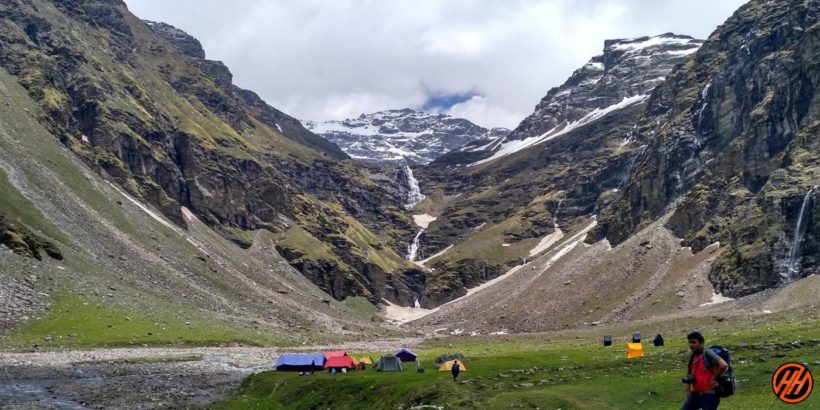














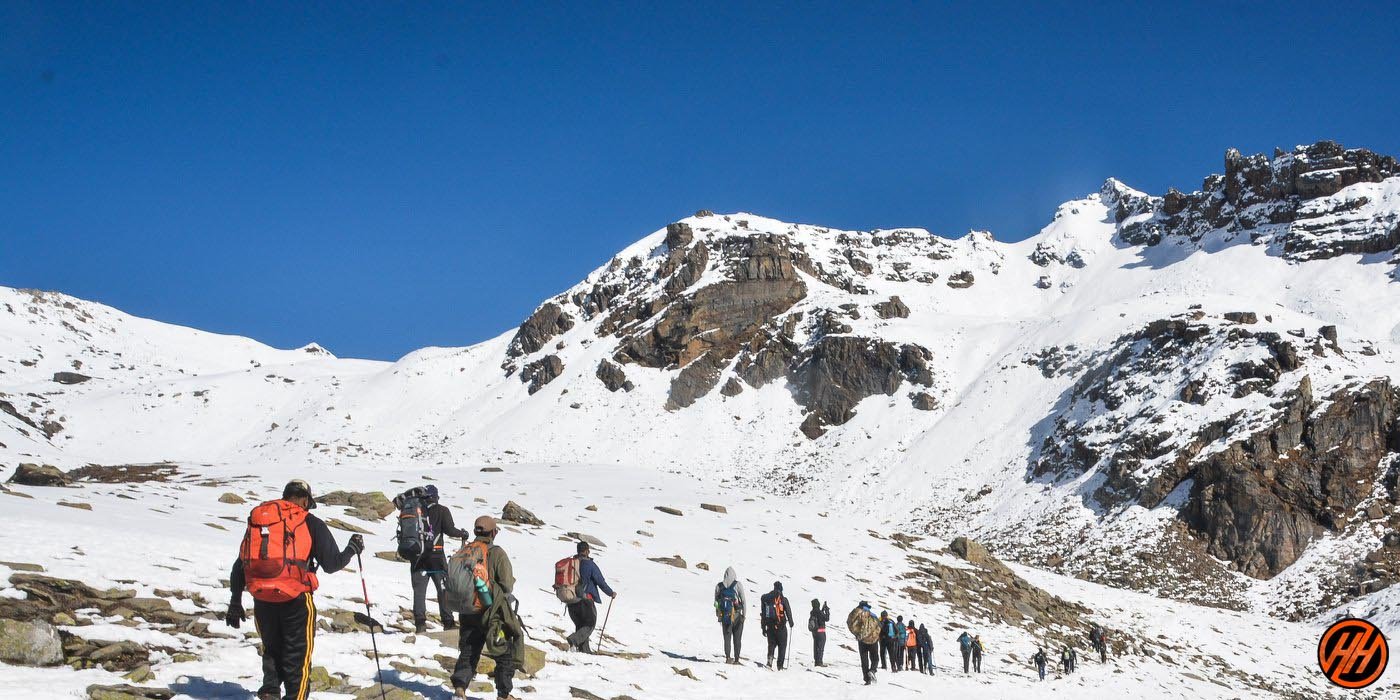
 What should you keep in mind for the Rupin Pass Trek?
What should you keep in mind for the Rupin Pass Trek?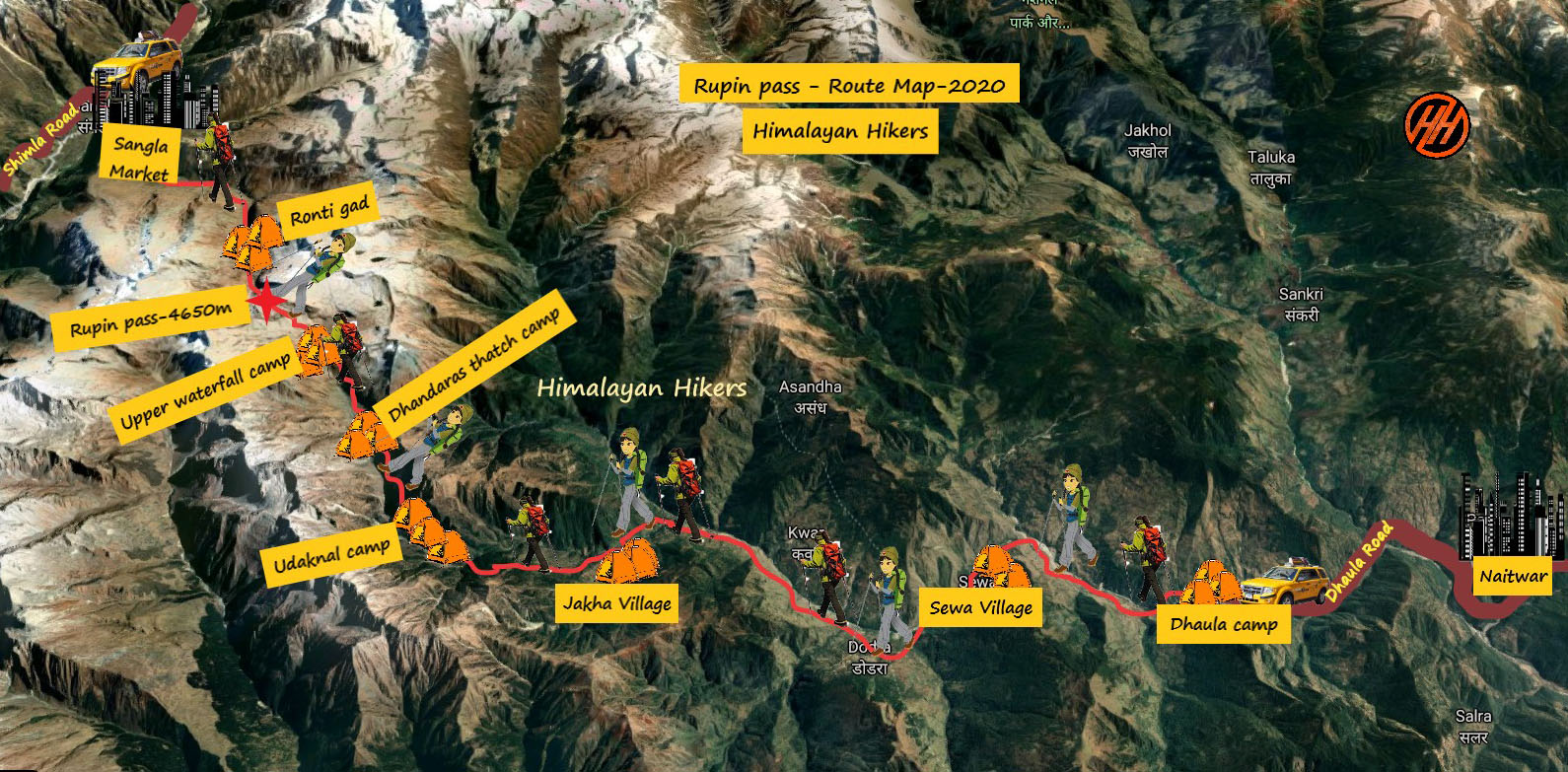
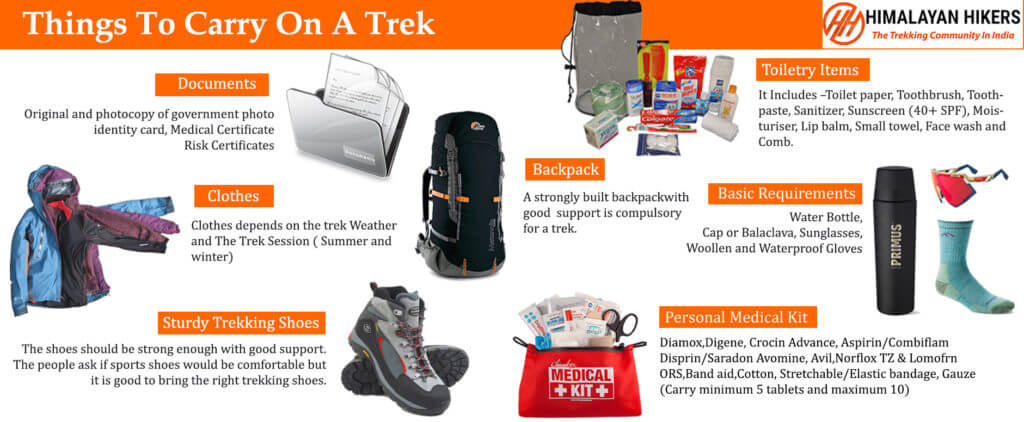


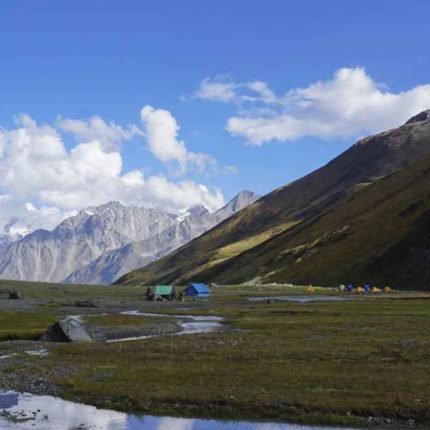
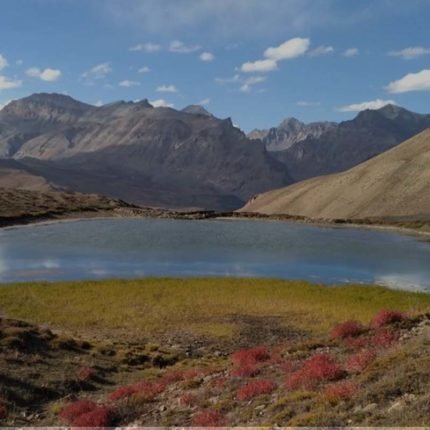
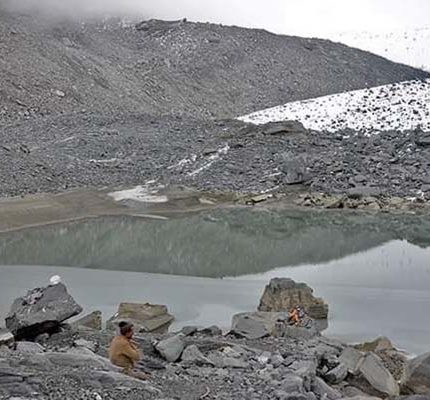
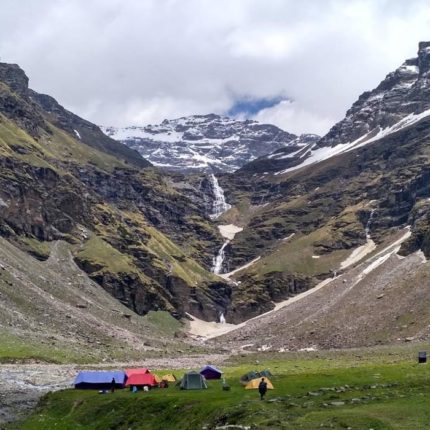
Santosh Shah –
We had done Bali pass trek with HH in October 2019 and this year Rupin pass was my second trek with Himalayan hikers, the Both treks experience was good hence our expectations were high.
Stay in Tent and Sankri Swargarohini hotel was good however the food was good all times . and good service. our guide best boths treks all Himalayan Hikers team local rupin and sankri range , best equipment, he quality of food was so so nice that all the people enjoyed it like a family.
All the best Team H.H
Rahul Singh –
The Himalayan Hikers is the best trekking organization in dehradun uttarakhand india , provide to all best services and hospitality , good and
Clean and tidy quality equipment, food and local guide – all safety etc thanks again team himalayan hikers
Abhishek Thapliyal –
Travel from dehradoon and to shimla is included(taxi) in the cost?
admin –
Please You can check our Rupin Pass Include and Exclude here.
manish chamoli –
Trekking in the Himalayas had been on my bucket list for quite some time. After some research, we booked ‘Rupin Pass’ trek with the Himalayan hikers group for the 18th June batch. 2017 It is an 8-day trek starting from Dehradun and ending at Shimla. In between, we need to trek/hike for around 70-80 Km (including the everyday acclimatization walks) through narrow trails with mighty Himalayas on one side and meandering Rupin river on the other to reach the summit at 15, 250 feet. Thanks you HH
Sakshar Sarkar –
Sakshar Sarkar group from Kalkata Rupin Pass 2nd batch 2017
housands of tired, nerve-shaken, over-civilized people are beginning to find out going to the mountains is going home; that wilderness is a necessity…
90k footsteps, 200+ narrow snow trails, a hanging village, snow-bridges, woods, following a river from plain to its source glacier, climb besides couple of big waterfalls, 10+ sq-km vast snow desert, Multiple almost vertical climbs.. finally leads to 15650 feet – Rupin Pass..
Last but not d least.. Thanks a lot to Team HH for organizing it so well and for the tremendous support.. Kuldeep Chainsingh Rawat… Himalayan hikers
Himanshu –
Excellent job by himalayanhikers team that ensured we had one of our best trekking experience on this trek. They did an excellent job in planning the route, excellent coordination over logistics. Amazin n hot food served on all days. Guides and porters were full of enthusiasm, respect and ensured safety of our group during the entire journey. This is a very special trek in terms of scenery and i would recommend every avid trekker to go on Rupin Pass trek with himalayanhikers only.
manju nath –
Prerna Bhatia
I have done 4 treks with them and all I want to say is they keep their promises good work…. Great experience ✌
neeta godambe –
I went on the Rupin Pass trek along with 5 friends. The trek was perfectly planned to give us great trekking experience – everything was handled in a superb manner. The logistics from meals, transport, camping were arranged and handled superbly.
The team was always helpful, they are awesome people who know their stuff
Thanks to himalayan hikers team